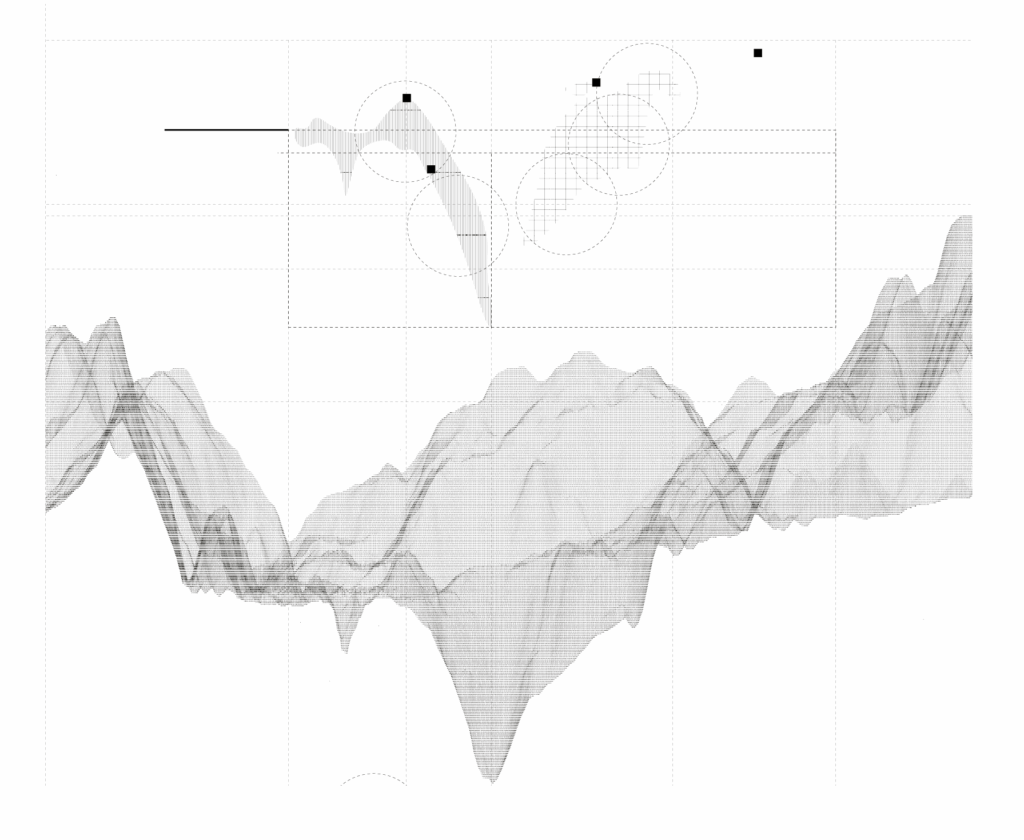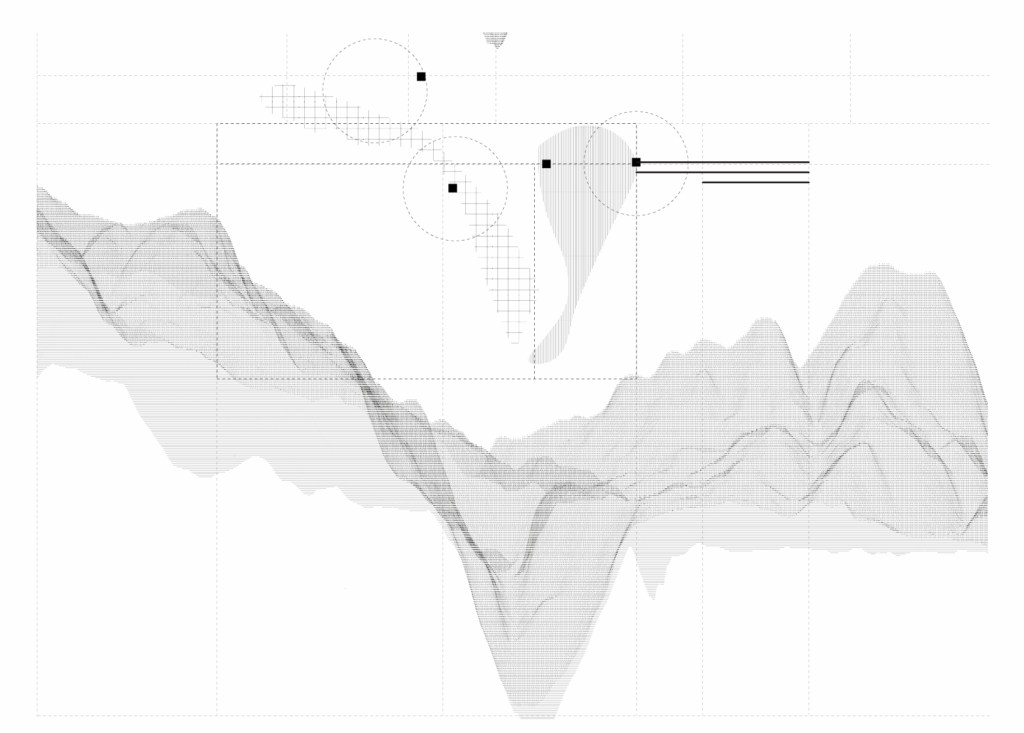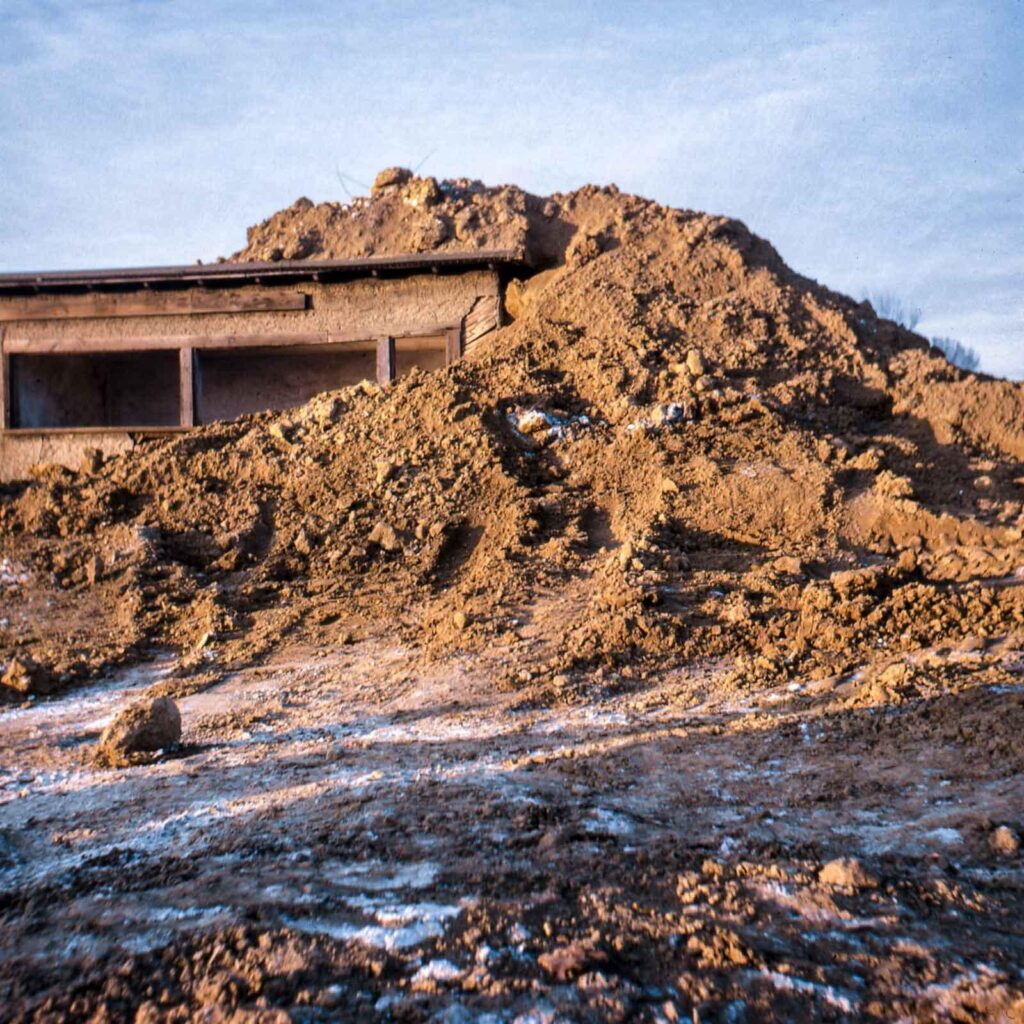INDETERMINACY AS OCCURANCE
a- Temporality
‘The universe inherited from Kepler, Galileo, Copernicus, Newton, and Laplace was a cold, frozen universe of celestial spheres, perpetual movements, implacable order, measurement, balance. It is necessary to exchange it for a warm universe with a burning cloud, balls of fire, irreversible movements, order mixed with disorder, waste, imbalance.’[6]
Fernández-Galiano’s statement highlights Entropy as a lens through which one can observe the environment. Rooted in the second law of thermodynamics, Entropy is inherently linked to time, manifesting as a constant state of transformation and decay — a Heraclitan process where order inevitably gives way to disorder. This transition defines Entropy’s essence, and its spatial manifestations offer a way to measure disorder and Indeterminacy. Thus, Entropy can be understood as the transformation of landscapes through multiple temporal conditions.

Robert Smithson expands this concept further, linking Entropy to economic and social conditions within a landscape. His work explores how infrastructure and territorial systems undergo cycles of intervention and transgression, revealing an inherent entropic process — creation through inevitable destruction. When describing post-industrial landscapes, Smithson writes: ‘The vast forces of entropy, both natural and social, silently worked to dissolve the landscape, cancel the present, render experience as memory.’[7] From this perspective, Indeterminacy can be measured through the temporalities of territorial processes, as tensions unfold between transformation and decay.
b- Spatiality
The spatial dimensions of Indeterminacy are revealed through the shifting nature of structures, infrastructures and human interventions. As Baudrillard suggests, ephemerality is ‘undoubtedly the truth of our future habitats’. Obsolescence is certain. ‘Nearly all believed in obsolescence’s inevitability. Some even embraced its largest gift, the possibility that architectural transience could engender human freedom.[8] Here, Indeterminacy’s antithesis – obsolescent certainty – spatializes models of territorial practice, allowing for the classification of Indeterminacy in space. If territorial interventions have a predetermined temporality, then landscape traces become the key to understanding how Indeterminacy manifests in space. Post-mining industrial landscapes illustrate this concept clearly: previously essential infrastructures become mute icons, while excavation sites become spatial manifestations of obsolescence. These remnants – vestiges of economic, social and anthropogenic obsessions with capital and control – leave imprints in the landscape that no longer serve their original function.

The interest, then, lies in these residual traces. They become spatial manifestations of Indeterminacy, particularly in how mining operates as a dialogue between void and land. Smithson refers to these as ‘entropic voids in the landscape’.[9] He materializes this idea in Half-Buried Woodshed, an installation where dumping soil onto a structure accelerates its decay, making destruction visible as an active process. The slow erasure of the shed illustrates Indeterminacy through the spatial traces of obsolescence — a testament to transient practices shaping a particular spatial order.

